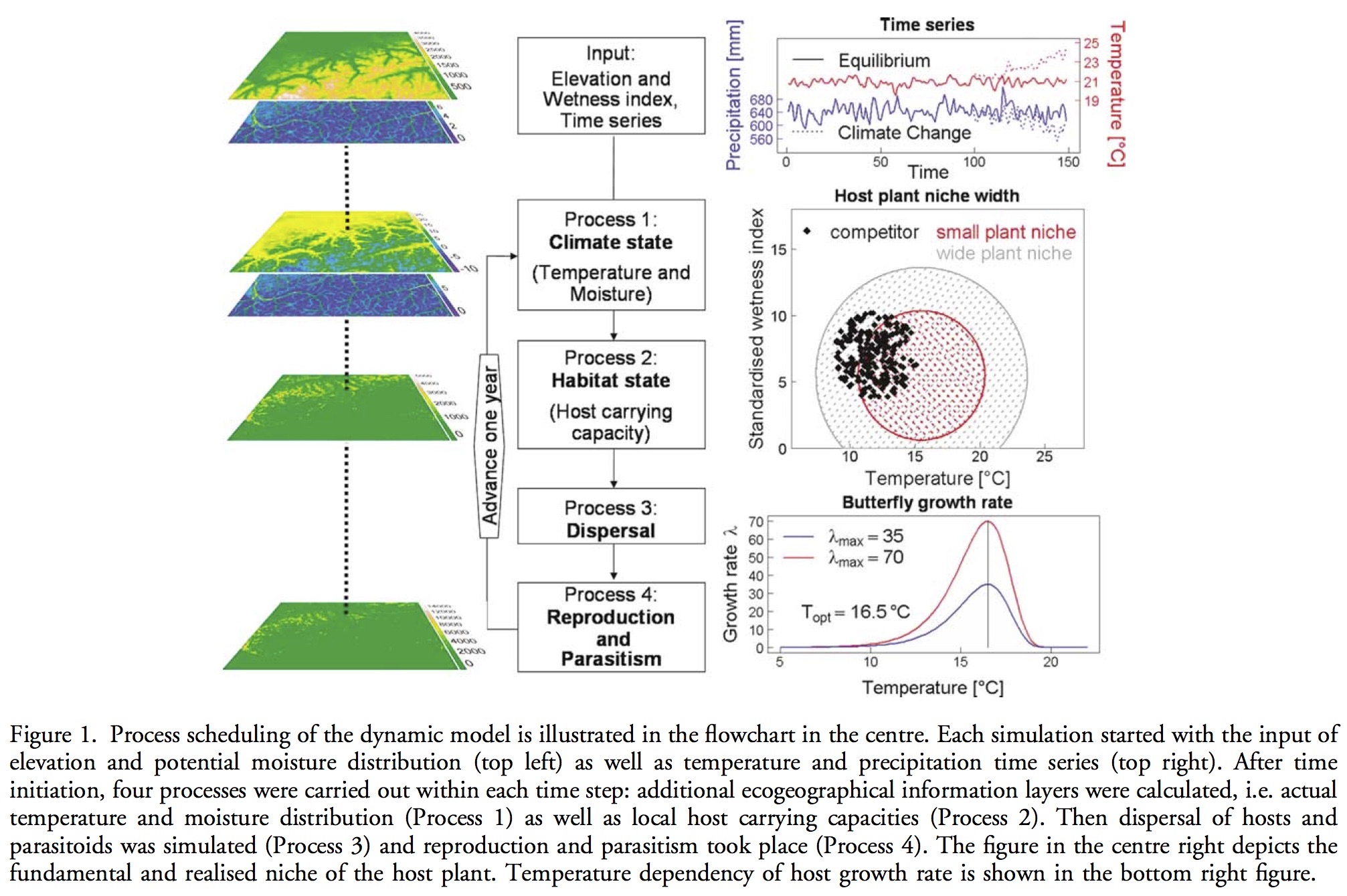Zurell, D., Jeltsch, F., Dormann, C. F. and Schröder, B. (2009), Static species distribution models in dynamically changing systems: how good can predictions really be?. Ecography, 32: 733–744. doi: 10.1111/j.1600-0587.2009.05810.x
SDMs are often used to predict changes in species’ distribution under climate change. However, these models implicitly assume equilibrium, and do not incorporate dispersal, demographic processes or biotic interactions explicitly. In order to understand the implications of such assumptions, the authors created a spatially explicit multi-species model. The 2 dimensional lattice of 148 X 113 sites with absorbing boundaries. The system was populated with butterflies and parasitoids that were able to leave, but not return. Climate which influenced habitat was assigned to each site, and changed with time. Simulations were 150 years. Occurrence data, collected by a ‘virtual ecologist’, was fit to a GLM and boosted regression tree.

Under average climate, GLMs and BRT had high predictive accuracy. Abrupt range shifts caused a loss in predictive power, but was regained after a small lag period settling at a new equilibrium. Generally, BRT out preformed GLMs under range expansion, and long-dispersal (vs short dispersal) organisms were tracked better.
